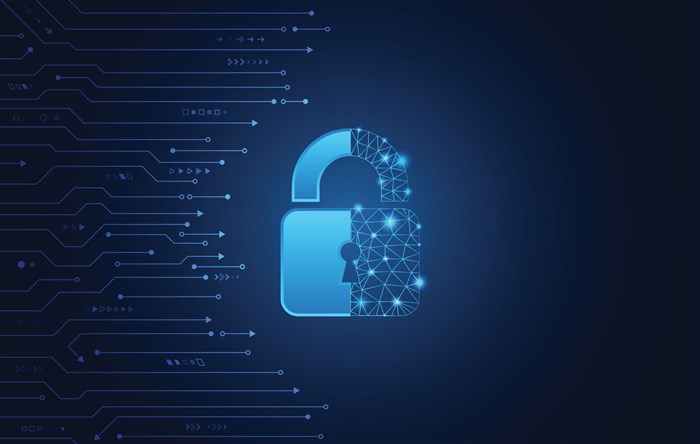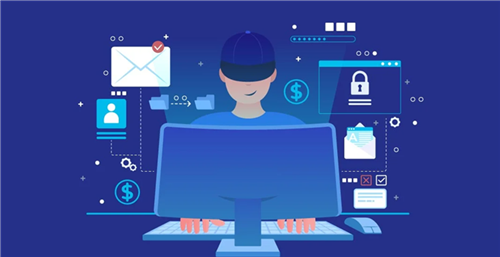
Cyberattacks have become increasingly sophisticated over the years. Gone are the days of fake emails that you could simply ignore to stay safe from cyberattacks. Today, cybercrime has become a business valued at USD 43 billion globally and is steadily growing by over 15% every year.
There are over 2300 complaints of cybercrime every day according to the FBI. All the victims of cybercrime have lost USD 6.9 billion to fraud in just 2021 alone. This amounts to an increase of 65% in global losses in one year, which makes it mandatory for businesses and individuals to educate themselves regarding the types of cyberattacks and the preventive measures they can take to overcome them. To deal with this problem big industries hire Cybersecurity experts to deal with this problem.
Table Of Contents
- Defining Cyberattacks
- How to Prevent Every Common Cyber Attack
Defining Cyberattacks
A cyberattack can be defined as any action taken to access unauthorised systems or networks to cause harm or disruption. They are unwelcome, expensive and unauthorised attempts at stealing, exposing, disabling, altering or destroying data. According to Cybersecurity Ventures researchers, cyberattack damages will stand at $10.5 trillion every year by 2025.
With these figures in mind, you must understand the various cyber security threat types that you should prepare for.
Related: Top Entry-Level Cyber Security Jobs
Types of Cybersecurity Attacks:
Understanding what you are up against is the first step toward success. Cyberattacks can be of many types and require different preventive measures to keep networks secure. They endanger individuals, startups and large businesses, based on the scale of the attack and the individual’s worth.
The most common types of Cybersecurity attacks know till date :-
- Malware attacks, including viruses, worms, and Trojan horses
- Phishing attacks, which use social engineering to trick users into giving up sensitive information
- Ransomware attacks, which encrypt files and demand payment in exchange for the decryption key
- Denial-of-service (DoS) attacks, which flood a network or website with traffic to overload and crash it
- Man-in-the-middle (MitM) attacks, which intercept and modify communication between two parties
- SQL injection attacks, which exploit vulnerabilities in databases to gain access to sensitive information
- Cross-site scripting (XSS) attacks, which inject malicious code into a website to steal user data or spread malware
- Advanced persistent threats (APTs), which use a variety of techniques to infiltrate a system and remain undetected for a long period of time
- Internet of Things (IoT) attacks, which target vulnerable IoT devices to gain access to a network or steal data"
- Remember to keep the bullet points concise and to the point, highlighting the most important information for the reader.
These are the top types of cybersecurity attacks:
-
Malware Attacks:
-
Malware attacks are the most common type of cyberattacks and include viruses like spyware, adware, ransomware, trojans, and worms.
-
A malware breach can occur if a user unwittingly clicks on a malicious link, or downloads infected attachments or programs that can enter the system and cause damage.
Preventing Malware Attacks:
-
Use antivirus software designed to protect systems and networks from malware.
-
Use a firewall to filter any data traffic entering your device.
-
Learn to identify suspicious links and avoid them.
-
Phishing Attacks:
-
Phishing is a social engineering attack where the hacker impersonates an authorized contact and shares fake emails or messages.
-
This gives the attacker access to sensitive data and financial credentials.
Preventing a Phishing Attack:
-
Scrutinize every email you receive and identify large errors like spelling mistakes or formatting errors.
-
Use an anti-phishing toolbar to help identify malicious emails.
-
Update all account passwords regularly.
-
Password Attacks:
-
Hackers use several programs and tools to crack a user’s password.
-
Some of the common tools are Cain, Abel, Aircrack, Hashcat and John the Ripper.
Preventing a Password Attack:
-
Create a strong password that combines numbers, alphabets, and special characters.
-
Don’t use the same password for every account or website.
-
Keep passwords updated to limit your exposure to attacks.
-
Man-in-the-Middle Attacks:
-
An MITM attack intercepts communication between two parties by hijacking the client and host interaction.
-
The connection between the client and server is connected and all communication flows through the attacker.
Preventing an MITM Attack:
-
Use encryption across all your devices and assess your website security.
-
Don’t use public Wi-Fi without a VPN.
-
SQL Injection Attacks:
-
An SQL injection attack takes place on a website that is database-driven.
-
The hacker manipulates an SQL query by injecting malicious code and entering the website search box to gain sensitive data.
Preventing an SQL injection attack:
-
Use a system designed to detect intrusions to identify unauthorized access to any network.
-
Validate all data supplied by a user to keep user input verified and accurate.
-
DOS or Denial of Service Attacks:
-
A DOS attack floods a system, network, or server with spam and traffic to saturate its bandwidth and resource capabilities.
-
This sudden surge in incoming requests overwhelms the server and slows down or shuts down the website completely.
Preventing a DoS or DDoS Attack:
-
Analyze website traffic regularly to recognize malicious users.
-
Identify warning signs such as intermittent shutdowns and network slowdowns and enforce preventive measures immediately.
-
Create a response plan and protocols for such incidents, maintain a checklist, and ensure your data center and team can handle DDoS attacks.
-
Insider Threats:
-
An insider threat is an individual within the targeted network waiting for the right time to strike.
-
An insider threat could be intentional or unintentional, and it can cause unprecedented levels of damage to an organization.
Preventing an Insider Threat Attack:
-
Create a culture of security awareness and educate all employees and customers about potential threats and how to avoid them.
-
Limit the resources that staff members can access based on their roles in the organization.
-
Train all employees to identify security threats, particularly insider threats.
-
Cryptojacking:
-
Cryptojacking is a highly-specific form of cyberattack where the hacker accesses someone else’s system to mine cryptocurrency.
-
They gain access by either targeting and infecting a website or manipulating the victim into accessing an infected link.
Preventing Crypto-Jacking Attacks:
-
Update all software and security apps before you start mining cryptocurrency to prevent vulnerabilities that hackers can exploit.
-
Train employees and partners to be aware of crypto-jacking and identify and avoid such threats. Install ad blockers to block JavaScript ads, which are the primary sources of crypto-jacking attacks.
-
Use extensions like Miner Block to recognize and prevent crypto-mining attacks.
9. Zero-day Exploits:
A zero-day exploit occurs as soon as a network announces an existing vulnerability that the vendor has not yet addressed. During this time, attackers target the vulnerability and exploit it before any solution can be implemented.
Preventing zero-day exploits:
- Have well-communicated processes for patch management to avoid deployment delays and automate these processes.
- Create a plan for incident response to quickly identify, prevent, and avoid cyberattacks, with a focus on zero-day attacks.
10. Watering Hole Attacks:
In a watering hole attack, the cyber attacker targets a specific group within an organization by infecting a website that the targeted group frequently uses.
Preventing watering hole attacks:
- Monitor website activity to detect any unusual activity. Use browser extensions to block potentially dangerous websites.
- Update browsers and operating systems regularly to ensure vulnerabilities are addressed. By taking these preventative measures, individuals and organizations can significantly reduce the risk of falling victim to a cyberattack.
- It is essential to stay vigilant, keep software up-to-date, and train employees to recognize potential threats to maintain a secure online presence.
How to Prevent Every Common Cyber Attack
In the points above, you have seen different ways to prevent individual types of cyberattacks. To summarise, here are some best practices you should follow to ensure you remain secure in the long run.
-
Keep changing your passwords every 5-6 months. Make sure you use a strong combination of numbers, alphabets and symbols. However, don’t make it so complex that you might forget it.
-
Regularly update your applications, operating systems and browsers. Every update fixes bugs and removes vulnerabilities that can be easily exploited by hackers and cybercriminals. Make sure you use a legitimate antivirus solution.
-
Use network security tools designed for Access control, application security, intrusion prevention systems etc.
-
Don’t open any emails from an unknown sender. Check them carefully for any glaring errors or signs of fraud.
-
Use a VPN. This ensures the traffic running from your device to the server is always encrypted.
-
Back up all your data regularly. Cybersecurity experts recommend always having three copies of each data file stored across two separate types of media and one offline location. Thus in the event of a cybersecurity attack, you can erase all system data and then restore it using the backed-up data.
-
Train and educate employees on the various principles of cybersecurity.
-
Use multi-factor or two-factor authentication. This requires a user to share two different factors for authentication to prove their identities. Whenever users are asked for any information besides their username and password, it is known as multi-factor authentication. This is critical for ensuring accounts remain secure.
-
Keep Wi-Fi networks secure if you are using them regularly, such as home or office Wi-Fi connections. Don’t use a public network without activating your VPN first.
-
Keep your mobile device safe as they make for easy targets. Always download and install apps from a trusted source and keep your device updated regularly.
Cybersecurity is a booming domain within the IT industry today. If you are looking for a future-proof career and want to take it in a new direction, this is the best move for you. To give your career an edge, enrol in a cybersecurity training course on Koenig today.

(1).pngM.jpg)

(1)(2).pngM.jpg)

.pngM.jpg)

COMMENT